Seven Tips for Traveling Solo in Death Valley
- Pathloom Guest Blogger
- May 9, 2022
- 5 min read
Updated: Nov 1, 2022
How to make the most of your trip to the desert
Sunset over Death Valley National Park, CA - Photo Credit: Bryan Donoghue
Get exclusive stories, trail reports, National Park alternatives, recipes, and more delivered directly to your inbox from our growing team of experienced thru-hikers, former National Park employees, and fellow adventure lovers.
Last year I drove across the United States solo and spent six months exploring the outdoors. I hit many of the outdoor classics in the West – Bryce Canyon, Zion (the “adult Disneyland” for adventurers), Moab, and Arches in Utah; Red Rock Canyon State Park in Nevada, Joshua Tree and Anza Borrego in California.
Of all these places, Death Valley was quite the unexpected gem. Coming out of crowded parks in Utah and Colorado, Death Valley is blissfully quiet. Death Valley is the largest US national park outside of Alaska, encompassing over 3,000 square miles of desert in California and Nevada. You can drive for hours without seeing a single car or human, just endless expanses of sand and rock with nothing man-made in sight. Bouncing up and down on these desert roads, you can imagine yourself to be a space explorer, or perhaps an extra in “Mad Max: Fury Road.”
Even if you love spontaneous travel, given the extreme environment in Death Valley it’s good to do a little bit of planning. If you’re looking to explore the alien landscape of the hottest place on Earth, here are seven tips for your Death Valley trip:
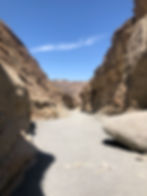
Mosaic Valley Trail: Death Valley National Park, CA - Photo Credit: Julia Atkinson
#1 Hit the hiking trails early
Not only is it beautiful to watch the sun come up over the desert, if you do these hikes at sunrise, you’ll be able to stay much cooler. You may even be able to squeeze in two short hikes before the heat of the day sets in around 10:30am. Here are some starter hikes between 2 and 7 miles to check out:
Golden Canyon and Gower Gulch Loop
Mesquite Flat Sand Dunes Trail
Fall Canyon Trail
Panamint Dunes Trail
Darwin Falls Trail
Titus Canyon Narrows
Mosaic Canyon Trail
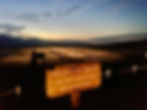
Badwater Basin: Death Valley National Park, CA - Photo Credit: Bryan Donoghue
#2 Check out the ghost towns & Badwater Basin
There’s plenty of weird stuff in the desert. Rhyolite, just outside Death Valley, is a Gold Rush era ghost town with unique art installations scattered among the remnants of the old town. The tables next to the old train station are also a great spot to picnic after a morning hike in the park.
Death Valley itself has many other fascinating ghost towns including Ballarat, Chloride City and Panamint City.
Badwater Basin, at 282 feet below sea level, is the lowest place in the United States. The 200 square mile stretch of salt flats is certainly worth a visit.
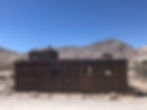
Rhyolite Ghost Town: Death Valley National Park, CA - Photo Credit: Julia Atkinson
#3 Download offline maps and share your location
There’s very little or no cell service in most of the park. There are many resources online that will allow you to download maps in advance, like Pathloom and maps.me. Sharing the trailheads for the hikes you’re planning to do with friends or family before heading into the park is a great idea. If you have the resources to invest in a Garmin inReach, this is also a good way to share updates on your location without cell phone service.
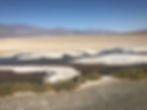
Salt Flats at Badwater Basin: Death Valley National Park, CA - Photo Credit: Julia Atkinson
#4 Avoid visiting in the summer (unless you love extreme heat!)
Death Valley is a great place to visit in the late fall, winter, or early spring. After April 15th, the park removes the rangers from the campsites due to the heat. For the past two summers, Death Valley has recorded temperatures as high as 130 degrees in July and August, some of the hottest measurements ever recorded. So if you’re planning to tent camp at sites like Furnace Creek, be prepared for excessive heat and wind by late April.
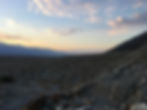
Death Valley National Park, CA - Photo Credit: Bryan Donoghue
#5 Bring a full gas can
Gas stations are few and far between, especially if you go deep into the park. There are gas stations inside Death Valley at Stovepipe Wells and Furnace Creek, but gas can be $1 or more per gallon versus outside the park. If your car is an older model, it may also be a good idea to have coolant on hand as well.
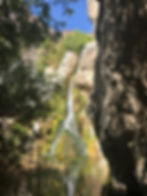
Darwin Falls: Death Valley National Park, CA - Photo Credit: Julia Atkinson
#6 Bring lots of water and a medical kit
Unsurprisingly, it’s very hot and dry down in the hottest and driest place on the planet. Make sure you’ve got enough water jugs for hiking, or in case your car breaks down. Though on the pricey side, the gas stations mentioned above also have a good selection of water and cold drinks. You should also bring a medical kit for hiking and be aware that there may be rattlesnakes on these hikes.
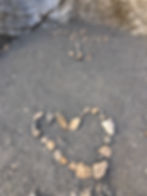
Mosaic Valley Trail: Death Valley National Park, CA - Photo Credit: Julia Atkinson
#7 Consider bringing a high clearance vehicle with four-wheel drive
Though all of the hikes mentioned above are reachable without a high clearance vehicle, sections of the park like The Racetrack are not. If you’ve got the resources to bring a car with four-wheel drive and a high clearance, it’ll open even more sections of the park for you to explore.
Overall, don’t overlook Death Valley for your next National Park adventure. The remote landscape there is unlike any other park in the west or beyond. And don’t forget to check out the stars – the lack of light pollution makes for amazing stargazing!
A writer who loves adventure, Pathloom guest blogger Julia Atkinson has hiked solo at over a dozen US national parks and traveled to 30+ countries on 5 continents. Check out stories from her life of adventure here.
Get exclusive stories, trail reports, National Park alternatives, recipes, and more delivered directly to your inbox from our growing team of experienced thru-hikers, former National Park employees, and fellow adventure lovers.
Check out these other articles by Pathloom which you may enjoy:
Sign up on our website for exclusive early access to the Pathloom BETA app, and let us help you plan your next outdoor trip! As an early user, you will receive exclusive access to our BETA app, outdoor guides, and information - created solely for you by Pathloom!
Pathloom is a Bay Area-based technology startup on a mission to get more people outdoors, more often by reimagining the way people discover the outdoors.

